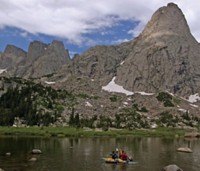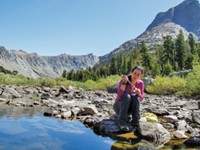Advertisement
Grab your lab coat. Let's get started
Welcome!
Welcome!
Create an account below to get 6 C&EN articles per month, receive newsletters and more - all free.
It seems this is your first time logging in online. Please enter the following information to continue.
As an ACS member you automatically get access to this site. All we need is few more details to create your reading experience.
Not you? Sign in with a different account.
Not you? Sign in with a different account.
ERROR 1
ERROR 1
ERROR 2
ERROR 2
ERROR 2
ERROR 2
ERROR 2
Password and Confirm password must match.
If you have an ACS member number, please enter it here so we can link this account to your membership. (optional)
ERROR 2
ACS values your privacy. By submitting your information, you are gaining access to C&EN and subscribing to our weekly newsletter. We use the information you provide to make your reading experience better, and we will never sell your data to third party members.
Biological Chemistry
Musseling Out Algae
Water Quality: Invasive mussels may turn the Great Lakes into a biological desert
by Janet Pelley
March 30, 2011

Anglers are pulling up fewer and smaller fish from the Great Lakes than they did a decade ago. Now a new study reveals that algal growth has dropped dramatically in the open water of Lakes Michigan and Huron (Environ. Sci. Technol., DOI: 10.1021/es103892w). The research suggests that invasive mussels are depleting the base of the lakes' food chain by consuming most of the algae. The researchers say that as a result, strategies for maintaining the lakes urgently need revision.
Scientists estimate that since the mid-1990s the lakes' biomass of fish has dropped by about 95%, says Mary Anne Evans, an ecosystem ecologist at the University of Michigan, Ann Arbor. Scientists have linked that decline to a 99% loss of the tiny shrimp-like invertebrates that fish thrive on. These invertebrates in turn feed on algae, she explains.
Earlier work had revealed that invasive mussels reduced algal growth in the southern basin of Lake Michigan, Evans says. "We used the relationship between changes in silica concentration and algal productivity to show that the same thing was happening across all of the offshore waters of Lakes Michigan and Huron," she says.
Algal productivity in the Great Lakes, the fixation of atmospheric carbon by algae, is largely a result of the size of the springtime bloom of diatoms. Diatoms are algae that pull silica out of the water column to encase themselves in intricate glass coatings, Evans explains. "The amount of silica removed by the bloom has long been used as an indicator of algal production in the Great Lakes," she says.
Mining data on silica concentrations collected over the past 30 years, Evans and her colleagues determined that algal production was about 80% lower in 2008 than in the 1980s and 1990s. The decline began in the mid-1990s after zebra and quagga mussels invaded the lakes. The study estimates that mussels consume up to 74% of new spring algae. When the foundation of a food web is depleted, Evans says, populations of the fish at the top of the web can suffer.
But Bill Taylor, a limnologist at the University of Waterloo thinks that "the mussels are altering lake productivity not only by filtering algae, but also by changing the way nutrients are distributed in the lake." While the offshore parts of the lakes are losing their algae, the nearshore areas are plagued with nuisance algal blooms fed by high levels of phosphorus. Some studies suggest the mussels may have concentrated phosphorus in the nearshore, thereby depriving the offshore of an element critical to algal growth, he says.
Nevertheless, Taylor and Evans agree that the binational agreements capping phosphorus inputs to the lakes, which haven't been changed since 1978, now ought to be reviewed more frequently. In addition, Evans says, managers must boost monitoring of nearshore areas and manipulate nutrient inputs for individual bays and basins in the lakes instead of applying a single target to an entire lake. The study's publication is timely: Renegotiation of the U.S. and Canadian Great Lakes Water Quality Agreement got under way last year.





Join the conversation
Contact the reporter
Submit a Letter to the Editor for publication
Engage with us on Twitter